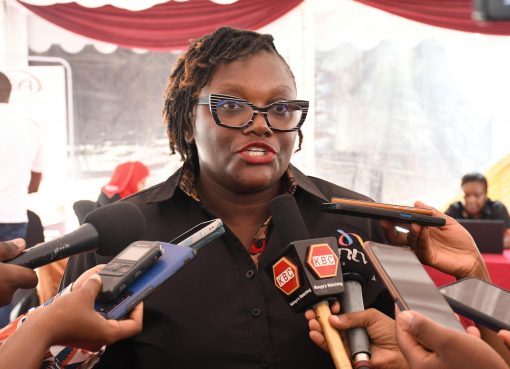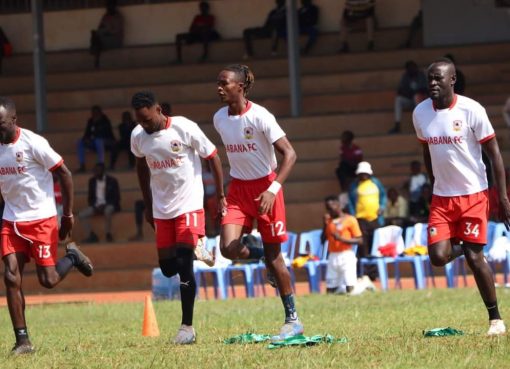Nakuru County is fast emerging as a force to reckon with as the fruits of devolution start gaining prominence in counties across the nation.
The county, which is in the process of seeking an upgrade to city status is running against time to meet specifications for the same approval.
Leaders are excited at the prospect of the new status and have used every opportunity to tell residents of the elevation.
However, some residents and organised groups seem to be reading from a different script and have a feeling that it is not yet time for the town, ranked as one of the fastest growing in the region to attain the anticipated new status.
But what does city status mean for residents?
A city is described as a large human settlement. Cities generally have extensive systems for housing, transportation, sanitation, utilities, land use, and communication.
In classifying an area as a city, municipality or town, The Urban Areas and Cities (Amendment) Bill, 2017 says approval of city status shall be subject to a raft of conditions that include a population of at least 250,000 people, ability to provide services that include water and sanitation, street lighting, proper drainage systems, an effective public transport system, health services, ambulance services, and public cemeteries. A town aspiring city status must also have a fire fighting and disaster management system in place.
A city is also expected to have several recreational facilities, state of the art stadia facilities, good road networks, solid waste management systems, education institutions that include pre- care facilities, training institutions, community centres, conference facilities and air transport facilities. A city must also have reliable sources of energy and electricity supply.
The bill has since been assented to by the President Uhuru Kenyatta thereby making it a legal apparatus that will accelerate the upgrade of several municipalities and towns to city and municipal status respectively.
The new law is expected to help County Governments review the criteria provided for in classifying an area as a city, municipality, town or market centre.
Under the new law, the number of the resident population required for a city has been reduced by half, from 500,000 to 250,000 people.
The same law allows a county to declare an urban area a municipality if it has a resident population of at least 50,000 residents.
For an area to be declared a town it has to have at least a population of 10,000 residents while a market centre will only require a population of at least 2,000 residents.
The law also proposes establishment of boards to govern and manage cities and municipalities.
It also outlines requirements of those who will be appointed to manage the concerned boards.
The county Governor Lee Kinyanjui has since signed a municipal charter that will enable Nakuru attain city status.
The county has also seen the constitution of a 9 member Municipality Board that has been tasked with collecting the views of residents on the proposed city status. The Board, led by John Kitilit, is currently holding meetings to gather views from members of the public.
“My administration is leaving nothing to chance to ensure Nakuru gets the city status. We are also in the process of beautifying the town. All public parks, including Nyayo Gardens, will undergo rehabilitation,” Kinyanjui said while commissioning the board.
Already, the county has rolled out several projects towards achieving city status.
Some of the projects that the county government has embarked on include the reconstruction and rehabilitation of low-volume sealed roads by county and national governments at a cost of Sh2 billion.
In a joint venture with the Kenya Urban Roads Authority (KURA), the county embarked on a programme aimed at linking several residential and commercial zones in a project totaling 22 kilometres of bitumen roads.
Among the roads that have received the facelift include one that links Menengai ward and the upmarket Milimani estate, Nakuru GK Prison through to London estate and part of the western side of the town. The second cluster of roads link Industrial Area, Kaptembwa, Bondeni, Naka, Free Area and Mwariki estates on the eastern part of the town.
Kinyanjui says the project is intended at increasing road network and mobility and reducing congestion in the town. Once completed, the roads are expected to greatly ease the congestion in the Central business district and the Nakuru Eldoret highway.
The lobbying for establishment of an airport at Lanet is yet another indication of the County’s race to put in place prerequisite infrastructure befitting city status.
The construction of the proposed airport is expected to commence once the tendering process has been completed and is expected to be constructed in two phase at a total cost of 3 billion.
The first phase will involve rehabilitation of the runaway, a fence, construction of taxiways and terminals, a military lounge, an air rescue centre and a fire fighting building while the second phase will entail expanding the runway from 1.7km to 3.6km.
The project has already received the support of the Kenya Airports Authority with its CEO Mr Jonny Andersen saying that Nakuru is a very critical area in the aviation industry thus the need for an airport.
He explained that Nakuru was centrally located and would therefore play a major role in averting crisis by giving a more convenient option for diversion of planes from Jomo Kenyatta International Airport during emergencies.
He spoke as he led a team of technical officers from the Kenya Airports Authority, Kenya Civil Aviation Authority, Kenya Air Force, Ministry of Transport and Infrastructure on a fact finding mission at the proposed airport grounds. Located next to the Lanet Military barracks.
Kinyanjui is keen to ensure that the town attains city status as part of his legacy and is therefore committed to ensuring that all requirements are met.
The governor’s administration recently allocated Sh20 million for the rehabilitation of the Nyayo Gardens, a public park located in the CBD while owners of buildings in the town have been directed to repaint them as part of the ongoing beautification project.
In order to ease traffic snarl ups, two major Interchanges that have been constructed along the Nairobi-Nakuru-Eldoret highway. The interchanges were constructed at the Nyahururu and Njoro turnoffs and have completely changed the face of the entry and exit points of the town.
In a bid to improve its financial status, Nakuru County moved to improve its revenue collection by sealing loopholes that were resulting in wastage and siphoning of finances. The move saw the improvement of revenue collection rise from 1.96 billion during the 2016/17 financial year to 2.28 billion during the 2017/18 financial year.
This represented a 16% increase in the face of the tough economic times that had been occasioned by a prolonged electioneering period.
The county government has started reaping the rewards of automation while also place targets for individual officers and sub counties, a fact that has seen increased output by county employees.
The county hopes to reduce its reliance on the national government for its projects by creating a robust revenue base.
Besides putting up infrastructure, the Kinyanjui led administration faces an uphill task of convincing some stakeholders that the city status is a good idea for them.
Ongoing public participation forums have created the image of citizens who are yet to understand the benefits of the upgrade.
Among those who have raised objection or called for a delay in elevating Nakuru are Street traders who are wary of the implications of the new status on the cost of doing business.
The Members of the Nakuru Street Traders and Hawkers Association (NSTHA), in a memorandum presented to the Ad Hoc Committee on elevation of Nakuru to city status, by their chairman Simon ole Nasieku, gave their reservations saying that the move would drive many of them out of business and therefore increase unemployment due to increased costs of trade licenses.
The members also want an assurance from the county government on where they will be relocated to if they are driven out of the town centre.
They cited a report that was prepared and handed over to the county government on the mushrooming of kiosks and the recommendation that alternative sites be sought for the growing number of street traders.
NSTHA further says that the town did not have adequate infrastructure such as roads, street lighting and security, solid waste management, storm water drainage Plan, adequate housing, and land for expansion. The memorandum further says that the town lacks a public cemetery and has not acquired land for it.
Nakuru Town East MP David Gikaria who attended the public forum seemed to echo the sentiments of the hawkers and called for further public participation forums to be held at the grass root levels.
“As we engage in public participation, we need to engage Wanjiku, who may not even be aware that Nakuru is set for elevation to city status,” Gikaria told the Committee.
In her presentation, Peris Mbuthia from the Kenya Association of Manufacturers noted that increased cost of licenses and rents could drive out manufacturers out of the town and therefore result in massive job losses while Stephen Thuo of the Kenya National Chamber of Commerce and Industry called on the county government to first resolve the issue of hawkers in the town by setting up premises for them outside the Central Business District where they can sell their wares.
Thuo supported the idea of elevating the town to city status saying it would boost its standing in the country and therefore enable it leap from the booming hospitality industry.
The Vice chairman of the Nakuru Business Association Wilson Gitu however felt that the town did not have enough infrastructure to warrant city status and cautioned against rushing into decisions that could prove disastrous in the long run.
He further said that the town managers must strive to provide good quality services before aspiring for greater responsibilities that will be brought about by the new status.
He asked for an assurance that the elevation would not result in increased license costs which he said could drive small scale businesses into closure.
While giving his remarks, Transport and Public Works Chief Officer Daniel Muthinga said that a lot still needs to be done to measure up available infrastructure to the new status but was quick to add that the county was up to the task.
He said that there was need to improve on the road network, street lighting and drainage systems which the county government was currently working on.
The stakeholders were all in agreement on the need for more public participation to enable more residents give their views and therefore become part of the process.
The Committee is expected to compile its report and give recommendations on the way forward. The report will then be tabled at the County Assembly for discussions.
By Jane Ngugi and Samuel Njoroge




